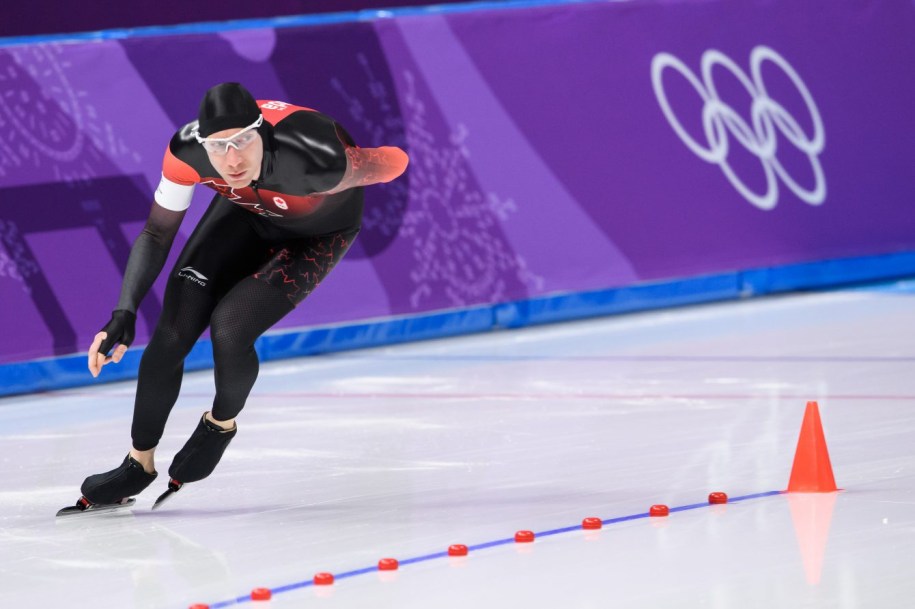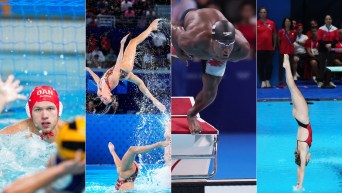How Team Canada will qualify athletes for Beijing 2022
Believe it or not, Team Canada athletes are already on the road to Beijing 2022.
Qualification windows have opened in some sports while others have key qualification events on the horizon.
Team Canada Beijing 2022 Qualification Tracker
Here’s a rundown of what you’ll want to be watching on the winter sports scene as we head towards the XXIV Olympic Winter Games.
Alpine Skiing
The qualification period is open from July 1, 2020 to January 16, 2022. Results achieved during this time will impact athlete placement in the World Cup Start List and Olympic Quota Allocation List, which will determine the number of entries for each NOC within the overall quota of 153 men and 153 women.
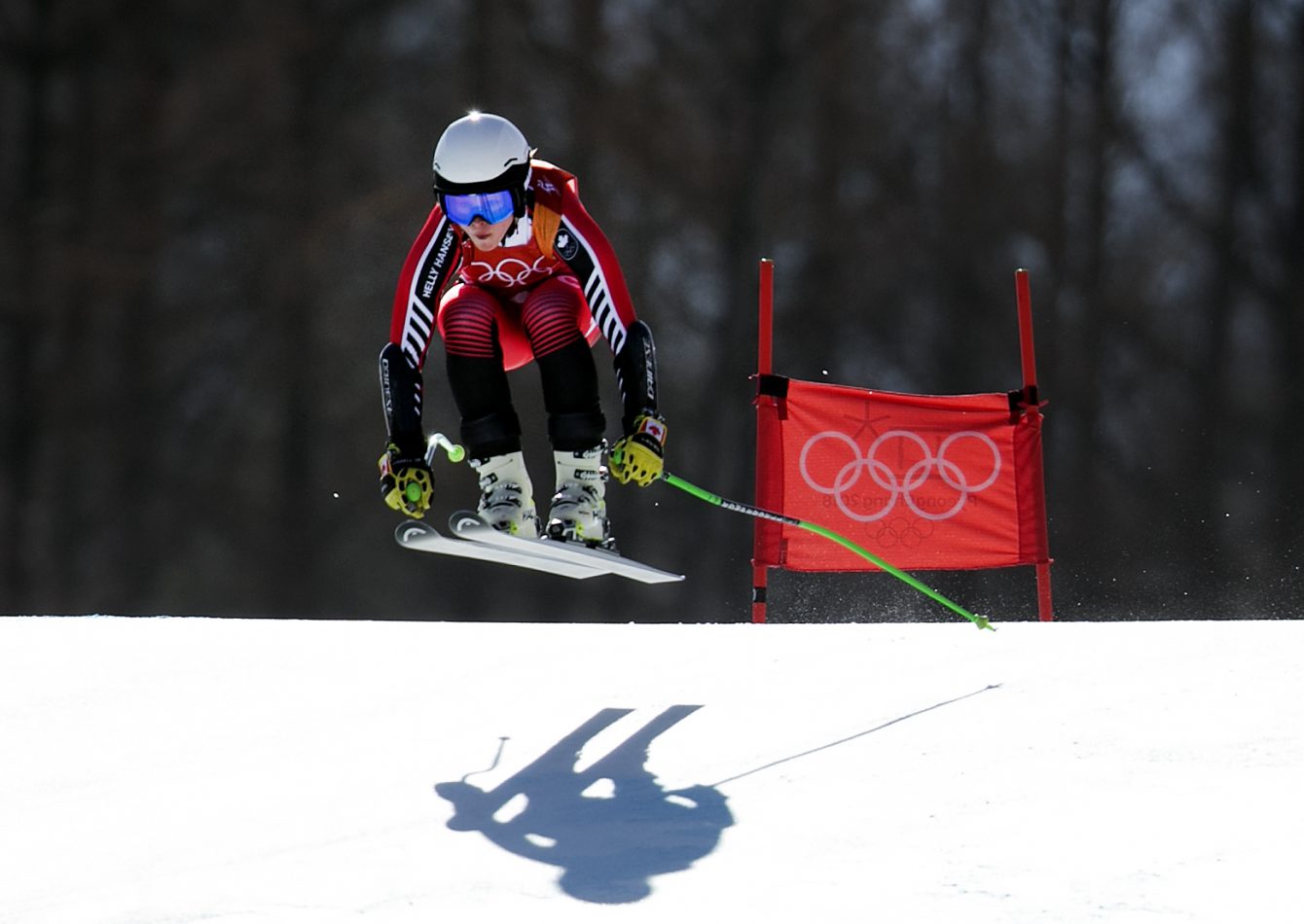
Roni Remme competes in the women’s super-G at the Jeongseon Alpine Centre during the PyeongChang 2018 Olympic Winter Games in PyeongChang, South Korea on February 17, 2018. (Photo by Vaughn Ridley/COC)
There can be a maximum of 11 men and 11 women for each NOC, with up to four starters in each of the five individual events per gender.
You can find the official qualification system here.
Biathlon
NOCs will earn Olympic berths via the OWG NOC Quota List on January 16, 2022. The 12 best single results for each country (six sprint competitions, one individual competition, three relay competitions, one single mixed relay competition, and one mixed relay competition) during the 2020-21 and 2021-22 seasons will count towards this ranking. For each gender, NOCs ranked 1-3 will qualify six athletes, NOCs ranked 4-10 will qualify five athletes and NOCs ranked 11-20 will qualify four athletes. NOCs not allocated any quota places through that process can be allocated up to two spots per gender via the IBU Qualifying Points List on that same date.
RELATED: Snow sports season in 2020-21 will have some changes
Bobsleigh
The qualification window will encompass two seasons worth of results, from October 15, 2020 to January 16, 2022, before publication of the IBSF Ranking List for each event.
NOCs can qualify one, two, or three sleds in each event, based on the depth of the team and following the table below. The NOCs that qualify three sleds in an event have the highest-ranked number three pilots in that event. That same process determines who qualifies two sleds, based on the number two pilots.
| Event | # of Crews per NOC | # of NOCs |
|---|---|---|
| 2-Man | 3 | 2 |
| 2 | 7 | |
| 1 | 10 | |
| 4-Man | 3 | 2 |
| 2 | 7 | |
| 1 | 8 | |
| 2-Woman | 3 | 2 |
| 2 | 4 | |
| 1 | 6 | |
| Women’s Monobob | 2 | 4 |
| 1 | 12 |
You can find the official qualification system here.
Cross-Country Skiing
The window for NOCs to earn quota spots will run from November 27, 2020 to March 20, 2021. For each gender, NOCs ranked 1-5 in the FIS Cross-Country Nation Rankings will qualify four athletes, NOCs ranked 6-10 will qualify three athletes, NOCs ranked 11-20 will qualify two athletes and NOCs ranked 21-30 will qualify 1 athlete.
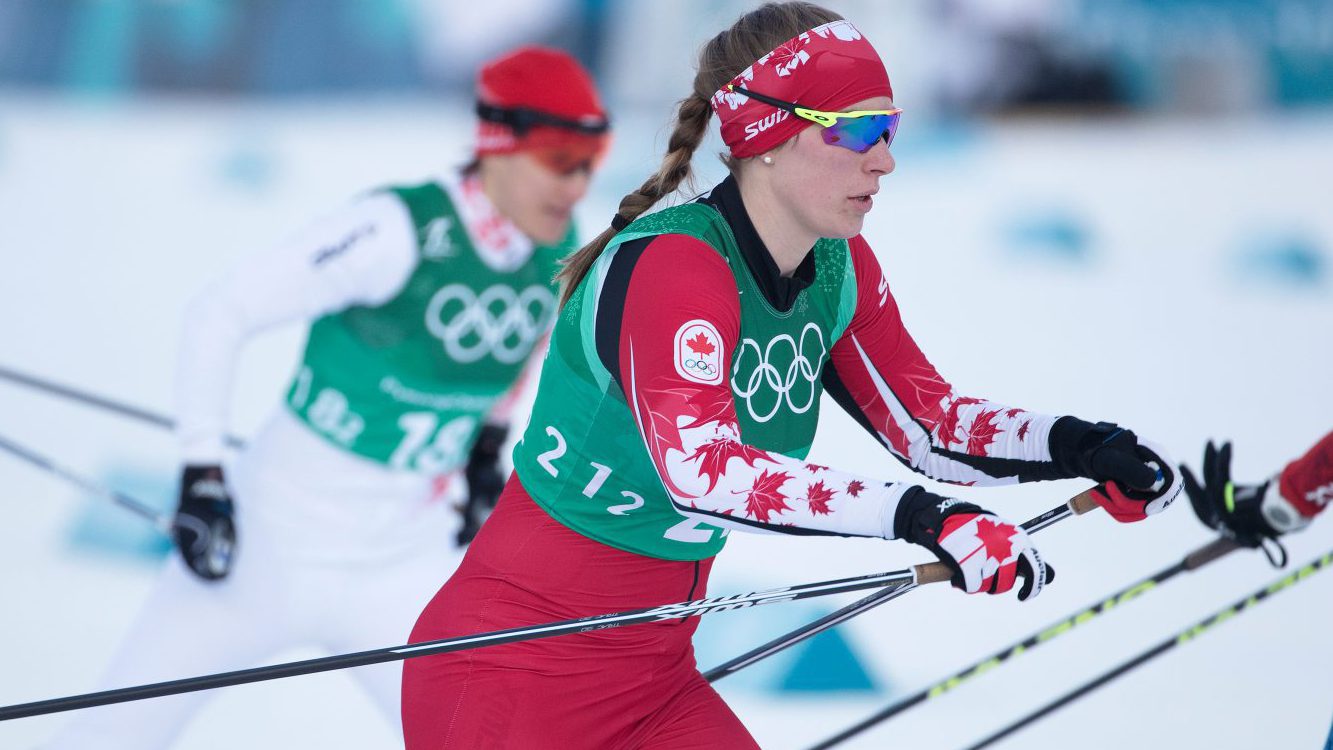
Canada’s Dahria Beatty competes in the women’s team sprint at the PyeongChang 2018 Olympic Winter Games in Korea, Wednesday, February 21, 2018. THE CANADIAN PRESS/HO – COC – Jason Ransom
Additional quota places will then be allocated until the overall maximum quota of 148 athletes per gender is reached. Each NOC can qualify up to eight athletes per gender, with a maximum of four starters per event.
You can find the official qualification system here.
Curling
The cancellation of the 2020 World Championships for men, women, and mixed doubles due to COVID-19 means there will be a lot of pressure on whoever is Team Canada at those three world championships in 2021.
The top six countries at the men’s and women’s worlds and the top seven countries at the mixed doubles worlds will qualify for Beijing 2022.
Both the men’s and women’s world championships will take place within the curling bubble that has been established in Calgary. The men’s event will go April 2-11, 2021. The women’s event, originally planned for late March in Switzerland until that was deemed no longer possible due to pandemic-related restrictions, was added to the bubble for April 30-May 9, 2021. The mixed doubles worlds are scheduled for April 24-May 1, 2021 in Aberdeen, Scotland.
UPDATE: Canada locks up men’s Olympic curling berth for Beijing 2022
UPDATE: Canada comes back to clinch women’s Olympic curling spot
UPDATE: Canada books Olympic mixed doubles curling berth for Beijing 2022
To fill out the fields of 10 men’s, 10 women’s and 10 mixed doubles teams, an Olympic Qualification Event will be held in December 2021.
Canada’s men’s and women’s Olympic teams will be named following the national curling trials, taking place November 20-28, 2021 in Saskatoon. The national mixed doubles trials will be held December 28-January 2 in Portage La Prairie, Manitoba.
You can find the official qualification system here.
Figure Skating
The most important competition of the pre-Olympic season will be the 2021 World Championships, taking place March 22-28 in Stockholm, Sweden. That is where 24 spots in each of the men’s and women’s singles events, 16 spots in the pairs event, and 19 spots in the ice dance event will be awarded for Beijing 2022.
RELATED: Ice sport season in 2020-21 will be like no other before
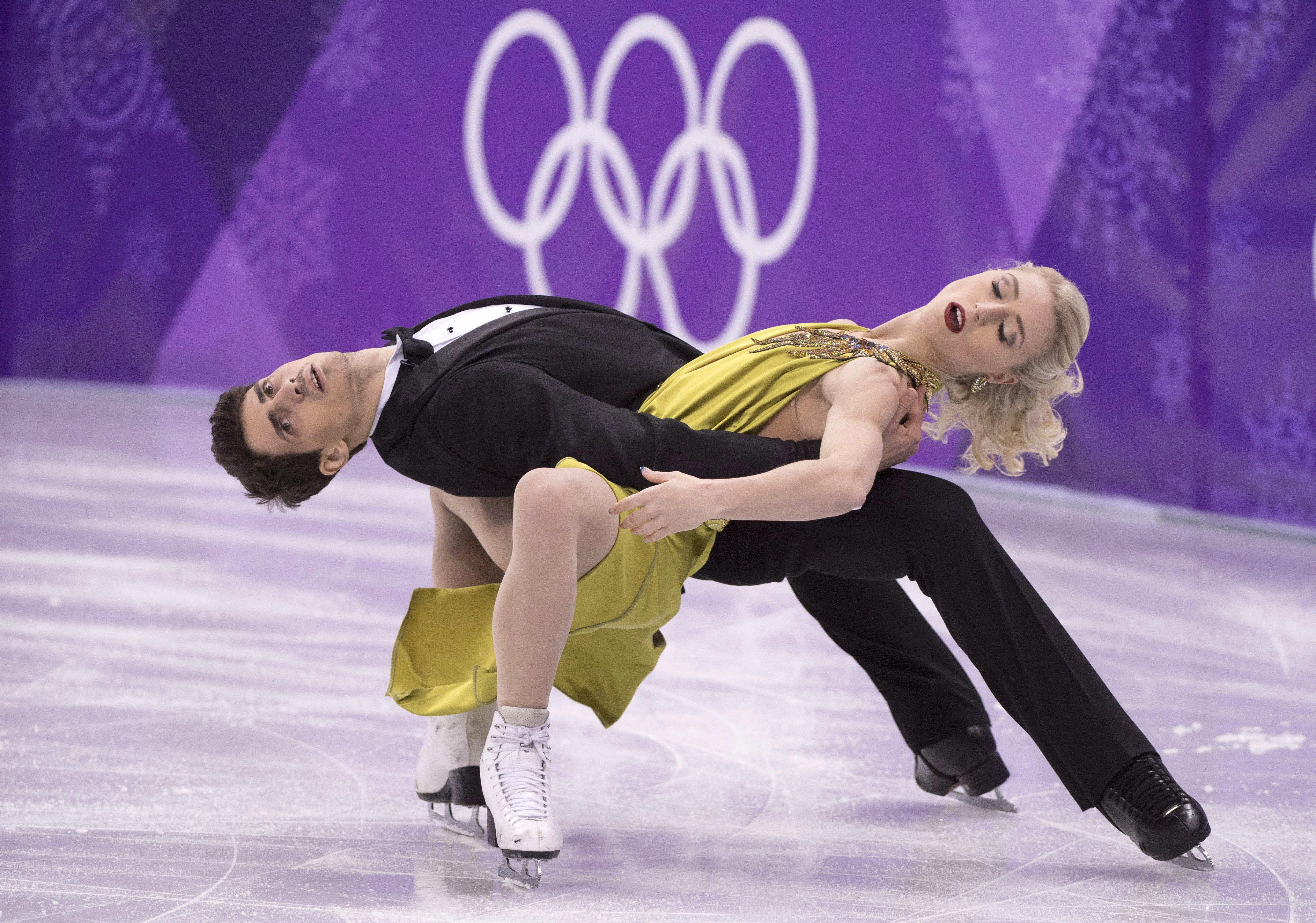
Canada’s Piper Gilles and Paul Poirier perform in the ice dance figure skating free program at the Pyeongchang Winter Olympics Tuesday, February 20, 2018 in Gangneung, South Korea. THE CANADIAN PRESS/Paul Chiasson
The number of quota places an NOC earns is dependent on the results of their skaters. To get the maximum three spots in an event, a country must have its top two skaters/duos in that event total no more than 13 points (ex: 1st and 12th place, 6th and 7th place). If a country is only represented by one skater in an event, a top two finish is required to earn three Olympic spots.
If a country’s top two skaters/duos total 14-28 points, they qualify two Olympic spots. If there is only one entry, then finishing 3-10 will earn two Olympic spots. After that, one spot will be awarded per country until the maximum quota for the event is reached.
UPDATE: Team Canada secures Olympic figure skating entries for Beijing 2022
A qualification competition in the fall of 2021 will add six men, six women, three pairs, and four ice dance couples to those fields, with a maximum of one spot per country per event.
The 10 NOCs which will get to enter the Olympic team event will be named following the ISU Grand Prix Final, which will be held December 9-12, 2021. Those spots will be primarily based on qualifying points earned by a country’s best skater in each of the four disciplines at the 2021 World Championships and the Grand Prix Series and Final in the fall of 2021.
You can find the official qualification system here.
Freestyle Skiing
The qualification period runs from July 1, 2020 to January 16, 2022, during which athletes in aerials, moguls, ski cross, halfpipe, and slopestyle/big air accumulate ranking points from their World Cup and World Championship results. That is the basis of the Olympic Quota Allocation List. Starting at the top of the list, one Olympic berth will be awarded per athlete until the maximum quota is reached in each event.
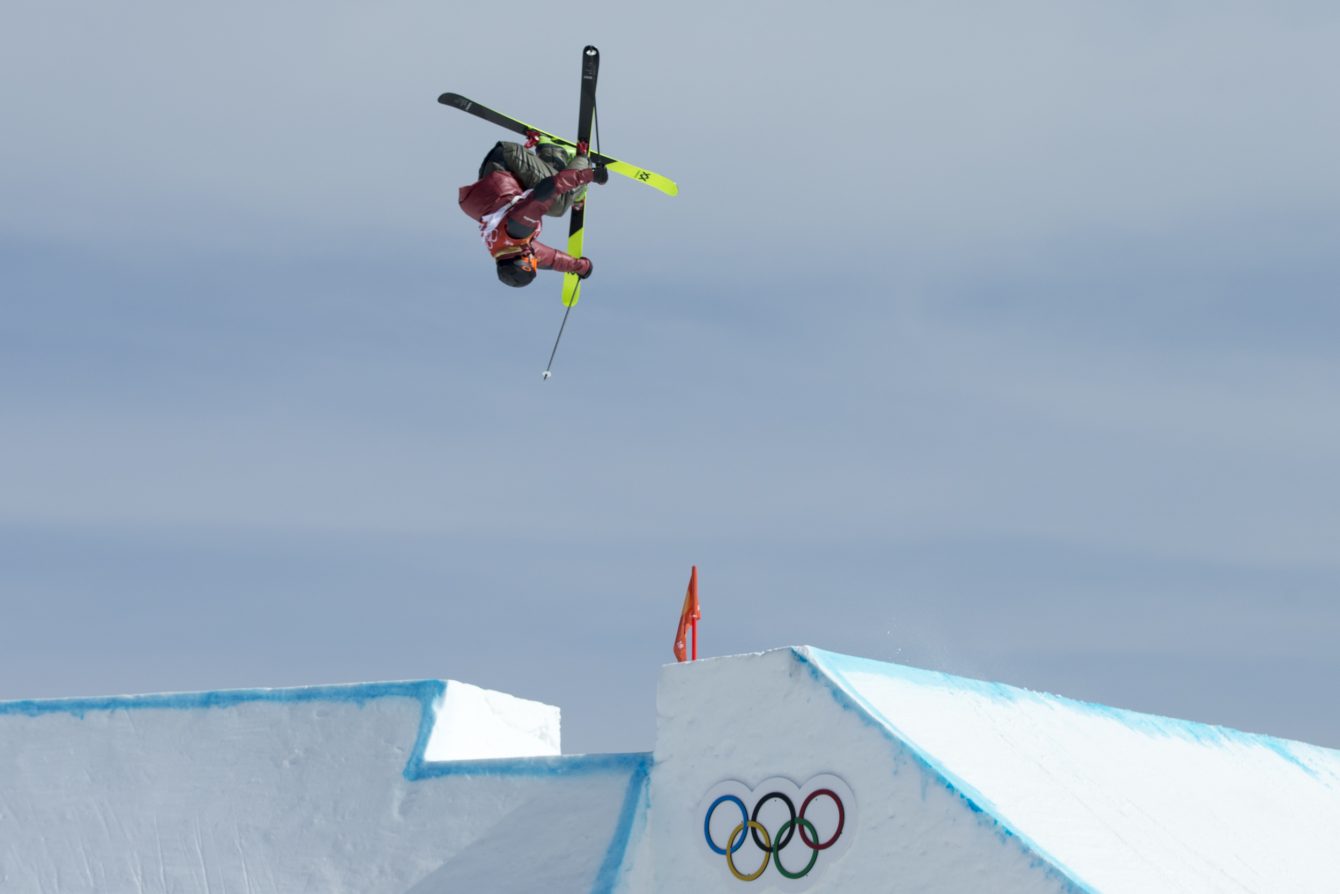
Team Canada’s men’s freestyle skiing slopestyle athlete Alex Marchand-Beaulieu competes at Phoenix Snow Park during the Olympic Games, in Bokwang, South Korea, Sunday, February 18, 2018. Photo COC/David Jackson
For each gender, there will be 22 aerials spots, 30 moguls spots, 32 ski cross spots, 25 halfpipe spots, and 30 slopestyle/big air spots awarded via the Olympic Quota Allocation List.
An NOC can qualify a maximum of 16 men and 16 women, with up to four entries per event, but cannot exceed 30 total athletes unless there are three aerialists qualified, which makes the country eligible for the new mixed aerials team event.
You can find the official qualification system here.
Ice Hockey
Canada has already qualified both the men’s and women’s hockey teams for Beijing 2022.
Based on the 2020 World Rankings, Canada will be the top seed in the men’s tournament and the second seed in the women’s tournament.
You can read more about how Canada qualified and who they will play against at Beijing 2022 here.
Luge
The qualification window will encompass two seasons worth of results, from November 1, 2020 to December 31, 2021, culminating in the publication of the Olympic Qualification World Cup Ranking Lists for each event.
In men’s and women’s singles, there will be 34 spots awarded, while the doubles will have 17 spots awarded. There is a maximum of three athletes per NOC in each of the singles events and two teams per NOC in the doubles.
You can find the official qualification system here.
Nordic Combined
The qualification period runs from July 1, 2020 to January 16, 2022, after which the Olympic Quota Allocation List and Continental Cup Olympic List are published.
There are 50 spots to be allocated via those lists, with precedence given to the Olympic Quota Allocation List which is based on two seasons of World Cup results. An NOC can qualify up to five men but only enter four per event.
You can find the official qualification system here.
Skeleton
As in bobsleigh, the qualification window will encompass two seasons worth of results, from October 15, 2020 to January 16, 2022, before publication of the IBSF Ranking List.
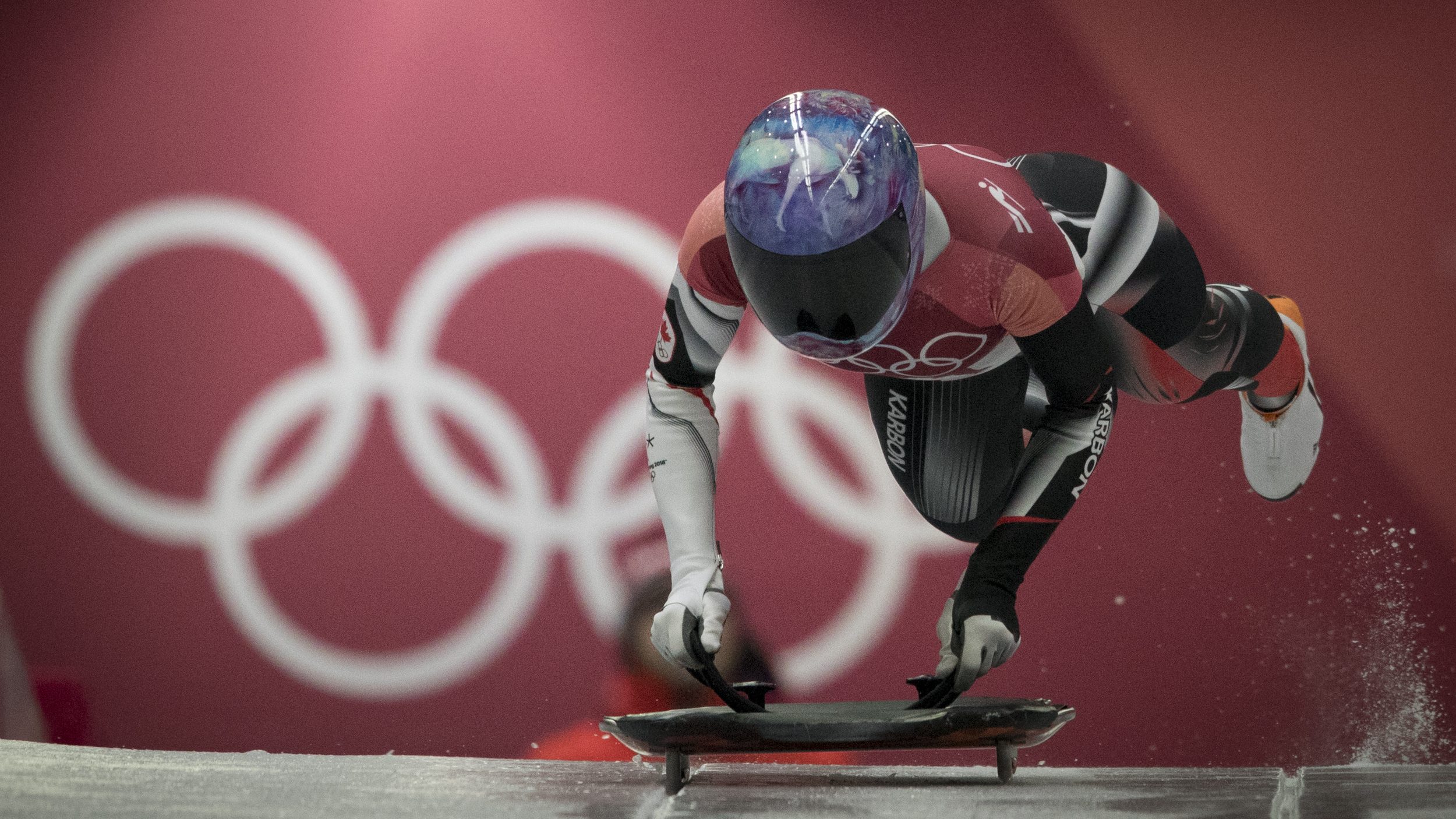
Team Canada’s skeleton athlete Mirela Rahneva races in the first heat at Alpensia Sliding Centre during the Olympic Winter Games in Pyeongchang, South Korea, Friday, February 16, 2018. (Photo: COC/David Jackson)
NOCs can qualify one, two, or three athletes in each of the men’s and women’s events, a determination based on the depth of the team. The two NOCs that qualify three athletes in an event will be the NOCs with the highest ranked number three slider. In the men’s event, six NOCs will have two athletes and seven NOCs will have one athlete. In the women’s event, four NOCs will have two athletes and 11 NOCs will have 1 athlete.
You can find the official qualification system here.
Ski Jumping
The qualification period runs from July 1, 2020 to January 16, 2022, after which the Olympic Quota Allocation List and Continental Cup Olympic List are published.
There are 60 men’s spots and 40 women’s spots to be allocated via those lists, with precedence given to the Olympic Quota Allocation List which is based on two seasons of World Cup results. An NOC can qualify up to five men and four women.
You can find the official qualification system here.
Snowboard
The qualification period runs from July 1, 2020 to January 16, 2022, during which athletes in parallel giant slalom, snowboard cross, halfpipe and slopestyle/big air accumulate ranking points from their World Cup and World Championship results. That is the basis of the Olympic Quota Allocation List. Starting at the top of the list, one Olympic berth will be awarded per athlete until the maximum quota is reached in each event.

Team Canada’s Sebastien Toutant competes in men’s snowboard slopestyle at Phoenix Snow Park during the PyeongChang 2018 Olympic Winter Games. COC Photo/David Jackson
For each gender, there will be 32 parallel giant slalom spots, 28 snowboard cross spots, 25 halfpipe spots, and 30 slopestyle/big air spots awarded via the Olympic Quota Allocation List.
An NOC can qualify a maximum of 14 men and 14 women, with up to four entries per event, but cannot exceed 26 total athletes.
You can find the official qualification system here.
Speed Skating – Long Track
There are two sets of rankings that will determine Olympic qualification.
The Special Olympic Qualifying Classification (SOQC) points ranking will be based on results from World Cup events held between November 1, 2021 and December 19, 2021. That will be used first to determine most of the quota places in each event.
The remaining quota places in each event will be based on the Special Olympic Qualifying Classification (SOQC) times ranking, which counts the best times per athlete in each event achieved in those same World Cup competitions.
The table below shows the number of quota spots available in each event and for each NOC.
| Event | Quota spots via SOQC points | Quota spots via SOQC times | Max quota spots per NOC per gender |
|---|---|---|---|
| 500m (M/W) | 20 | 10 | 3 |
| 1000m (M/W) | 20 | 10 | 3 |
| 1500m (M/W) | 20 | 10 | 3 |
| 3000m (W) / 5000m (M) | 14 | 6 | 3 |
| 5000m (W) / 10,000m (M) | 8 | 4 | 2 |
| Mass Start (M/W) | 24 | — | 2 |
| Team Pursuit (M/W) | 6 teams | 2 teams | 1 team |
For each gender, if an NOC qualifies the team pursuit and the maximum entries in all of the individual events, the NOC can have up to nine skaters. Otherwise, the limit is seven or eight, dependent on other criteria.
You can find the official qualification system here.
Speed Skating – Short Track
Results from four World Cup events held between September 15, 2021 and December 5, 2021 will determine the Special Olympic Qualifying Classifications. The top eight NOCs in each of the men’s 5000m relay and women’s 3000m relay will qualify four athletes per gender. Quota spots are then awarded in each of the individual events.
An NOC that qualifies a relay is permitted up to five athletes for that gender, while NOCs without a relay can only have a maximum of three athletes for that gender. An NOC can start no more than three athletes in an individual event. For each gender, the 500m and 1000m will have 32 total skaters while the 1500m will have 36 total skaters.
There will also be 12 teams entered in the Olympic debut of the mixed team relay.
You can find the official qualification system here.

